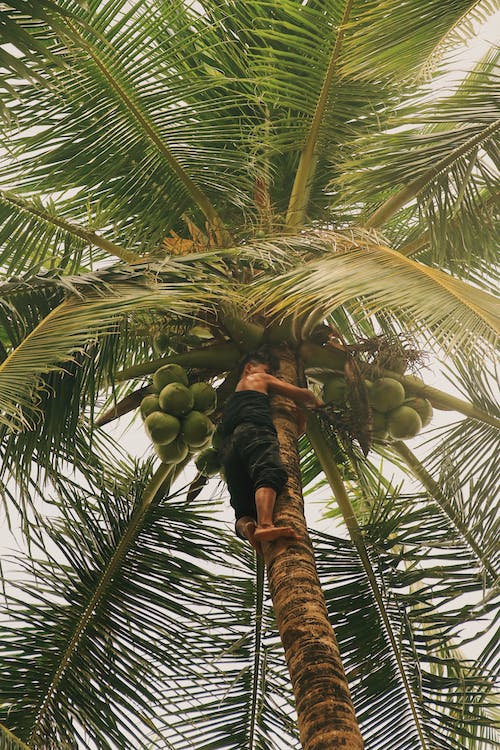If people would be asked what tree to plant in their backyard or garden, perhaps only a very few would like and would have considered planting a coconut tree. But do you know that coconut is one of the trees that almost all its body parts are useful? Yes, indeed, it’s one of the trees with very useful parts – from its roots to its leaves, and fruit, and even its husks – everything is useful! That is why it boasts as a super tree, and it is even called the “Tree of Life.” If you are tree lover read this tips from Fort Worth tree care services.
In 2019, the Philippines still dominated the Global Coconut Oil Market in terms of production and trade.
Since prehistoric times, coconuts have been widely used for various purposes. The coconut tree is a kind of palm tree with a single straight trunk. There is only a single species of the coconut palm tree, and it is called Cocos nucifera. However, within this species exist many cultivars that bear a wide variety of different types of coconuts.
Coconut Palm tree has two groups: the dwarf varieties and tall varieties. The tallest coconuts palm trees can be found in Columbia in the valley called Cocora. These trees can grow up to 60 meters (200 ft).
Uses of Coconut
Boasting as the “tree of life,” almost all parts of the coconut is usable. The young coconut meat can be eaten raw and fresh or used as an ingredient for desserts and some dishes. The inner flesh of the mature seed and the coconut milk extracted from it forms a regular part of many people’s diets in the tropics and subtropics. Mature brown coconut meat can be grated, and its milk is used in various cooking and even in making oil. Coconut juice is different from coconut milk, as it is a water-like liquid when you open the fruit.
Mature coconut flesh is usually dried and processed to be used in soaps, cosmetics, or processed for oil. The hard shell, leaves, and leaf stems can be used as charcoal in traditional cooking, and coir from the fibrous husk can be used in making ropes.
Coconut leaves have sticks in the middle, and you can remove the leaves and make the sticks as a broom to clean your yards. Collect as many sticks enough to make a broom that your hand can easily grasp. Other people make this as a livelihood.
In some places, the coconut has cultural and religious significance. In India, specifically in the Hindu religion, coconut is a holy fruit, called Sriphala in Sanskrit, or God’s fruit.
A satvik fruit in India, coconut is therefore sacred, health-giving, pure, clean, and bestowed with several properties. It is used in rituals and forms the basis of wedding and worship rituals in Hinduism. Its falling nature of the mature fruit has led to a preoccupation with death by coconut.
Whether you are into its religious, commercial, or health value, planting coconut trees has advantages and benefits.
Choosing a COCONUT SEEDLING
Like in any plant, knowing quality seeds and seedlings when planting is very crucial. A farmer growing many coconut trees for business purposes must know well qualities of a good seedling. Here are the following characteristics of good coconut seedling:
It is healthy because…
It is well-developed and has shiny green leaves.
It is a pest- and disease-free.
It has been kept for about 9 months in the nursery and has about 6 leaves that are not overgrown.
SUITABLE PLANTING SITES
Although coconut palms can thrive on various soil types, they generally prefer sandy-loamy soils, which drain freely.
Choose a suitable planting site, clear the area by slashing and removing logs and stumps, and make it ready before the rainy season starts. This will ease later activities such as field lay-out, weeding, and pests’ control like the Rhinoceros beetle.
HOLING AND PLANTING
Dig planting holes before the rainy season. The hole’s size depends on the type of seedling, i.e., bare-root or poly-bag seedling. A hole with 60mm width and depth is recommended for the poly-bag seedling, while bare-root seedlings can be smaller.
When digging the hole, separate the topsoil from the bottom soil as you will be mixing the topsoil with compost or manure. The hole should be half-filled with the fertile topsoil mixture before planting the seedling.
Put the seedling on the hole, covering and filling the whole nut with soil. Firmly press the soil around the seedling so that it does not get blown over by strong winds.

